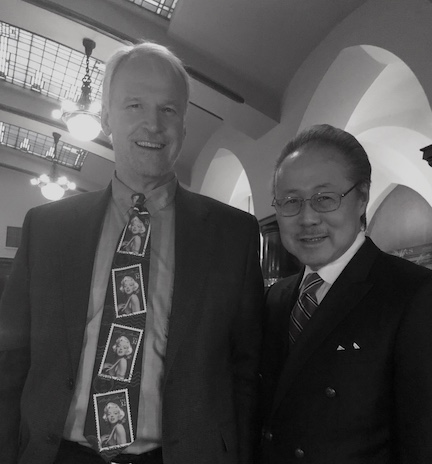Seventy nine year old Story Musgrave is a name we all should know.
My sons saw the movie Interstellar and decided it was the perfect show for their old man’s sixtieth birthday.
And they were right. I was moved by a movie, which is what’s supposed to happen, right?
I left with a yearning feeling that won’t go away, and it’s more than yearning for Anne Hathaway which ought to be enough.
My yearning brought back memories of space shots during my baby boomer youth from John Glenn to Apollo 11.
It also reminded me of the Apollo 1 fire in 1967.
Did yearning come from the adventure of space exploration revived by Interstellar?
No.
Was it the incredible technology in the movie?
No.
Was it Anne Hathaway? Probably, but not all.
My yearning upon leaving Interstellar was the forgotten connections we all have and ignore.
What’s the difference between forgotten and ignored? Every hitchhiker on the road knows that answer.
I left the theater thinking of the poem Howl by Allen Ginsberg, and Kurt Vonnegut’s interpretation.
“I saw the best minds of my generation destroyed by madness,
starving hysterical naked, dragging themselves through the negro streets at dawn looking for an angry fix,
angelheaded hipsters burning for the ancient heavenly connection to the starry dynamo in the machinery of night,”
I read Howl in English Lit classes.
One time a grad assistant even gave a dramatic reading in breathless fashion that sprayed the front row of students in beatnik spit.
Eventually I found Kurt’s words on Howl and had a howl of my own.
From thenation.com:
“I like ‘Howl’ a lot. Who wouldn’t? It just doesn’t have much to do with me or what happened to my friends. For one thing, I believe that the best minds of my generation were probably musicians and physicists and mathematicians and biologists and archaeologists and chess masters and so on, and Ginsberg’s closest friends, if I’m not mistaken, were undergraduates in the English department of Columbia University.
No offense intended, but it would never occur to me to look for the best minds in any generation in an undergraduate English department anywhere. I would certainly try the physics department or the music department first — and after that biochemistry.
Everybody knows that the dumbest people in any American university are in the education department, and English after that.”
At the time I was an English major and took no offense. I did start carrying a newspaper to classes in case another teacher decided to read out loud.
The best minds of a generation in the mid-50’s has to include Story Musgrave.
What’s it take to be considered the best mind of a generation? Consider Mr. Musgrave, born in 1935.
From wiki.com:
Story Musgrave attended Dexter School, Brookline, Massachusetts and St. Mark’s School, Southborough, Massachusetts, from 1947 to 1953, but left school shortly before graduation and before receiving his high school diploma. He received a BS degree in mathematics and statistics from Syracuse University in 1958, an MBA degree in operations analysis and computer programming from the University of California, Los Angeles in 1959, a BA degree in chemistry from Marietta College in 1960, an M.D. degree from Columbia University College of Physicians and Surgeons in 1964, an MS in physiology and biophysics from the University of Kentucky in 1966 and a MA in literature from the University of Houston–Clear Lake in 1987.
Not bad for a high school dropout who left to join the Marine Corps and serve in Korea.
But there’s more. From nasa.gov:
He has flown 17,700 hours in 160 different types of civilian and military aircraft, including 7,500 hours in jet aircraft. He has earned FAA ratings for instructor, instrument instructor, glider instructor, and airline transport pilot, and U.S. Air Force Wings. An accomplished parachutist, he has made more than 500 free falls — including over 100 experimental free-fall descents involved with the study of human aerodynamics.
Dr. Musgrave was employed as a mathematician and operations analyst by the Eastman Kodak Company, Rochester, New York, during 1958.
He served a surgical internship at the University of Kentucky Medical Center in Lexington from 1964 to 1965, and continued there as a U. S. Air Force post-doctoral fellow (1965-1966), working in aerospace medicine and physiology, and as a National Heart Institute post-doctoral fellow (1966-1967), teaching and doing research in cardiovascular and exercise physiology. From 1967 to 1989, he continued clinical and scientific training as a part-time surgeon at the Denver General Hospital and as a part-time professor of physiology and biophysics at the University of Kentucky Medical Center.
He has written 25 scientific papers in the areas of aerospace medicine and physiology, temperature regulation, exercise physiology, and clinical surgery.
Story Musgrave, from dropout to pilot to doctor. End of story? Of course not.
He’s also an astronaut on the Space Shuttle.
Such an accomplished man must come from an incredibly supportive family, an environment that produces superior people…Or in his words:
“I came from an extraordinarily dysfunctional family, full of abuse and alcoholism… It’s hard to say what drives a three year-old, but I think I had a sense that nature was my solace, and nature was a place in which there was beauty, in which there was order.”
Interstellar showed the human race searching for life, for a new home, a warm spot in the chill of space.
Story Musgrave is one man you’d want along for the ride.



